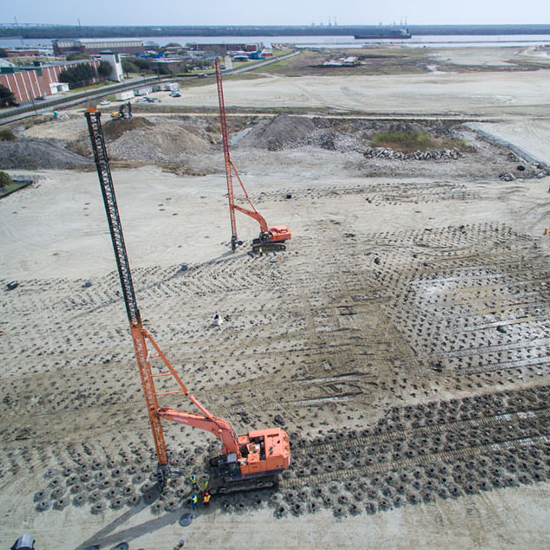
Vibro compaction is probably the oldest dynamic deep compaction method in existence. It was introduced and developed in 1936 in Germany.
The method enables the compaction of non-cohesive soils to give excellent results. A detailed description of the method may be found in literature.
The method is simply densifying the soil by deep single or double vibration probes that are hung by a crane. The measure of densification may be the settlement gained at top of ground surface and the gain in bearing capacity may be assessed through a zone load test and the improvement in soil properties is assessed by performing CPT test prior and after compaction.
The Vibro Compaction is done on points chosen in a triangular or square pattern to cover the whole area needed to be improved.During operation, the cylindrical, horizontally vibrating depth vibrator is usually suspended from a crane or like equipment. It weighs 15–40 kN, with a diameter of 30–50 cm and a length of 2–5 m. The vibrator reaches application depth by means of extension tubes.
Supply pipes for water and air (optional) are also enclosed in the extension tubes. The pipes can deliver their payload through the vibrator tip as well as through special areas of the extension tubes to aid the ground penetration action of the vibrator.
It is possible for settlement of the surface to range from 5% to 15% of the compaction depth. This range depends on the density prior to compaction, as well as the targeted degree of compaction.